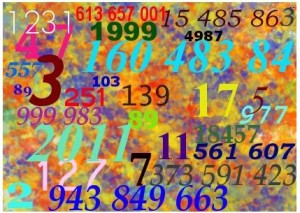- kristalalley@gmail.com
 You know the old saying ‘no news is good news’ – unfortunately, these days the news is plentiful. While the panic of 2008 has subsided, it has left behind disheartened workers, anxious consumers as well as companies stuck in a murky bog of uncertain regulation. That doesn’t mean there are not bright spots deserving of some attention.
You know the old saying ‘no news is good news’ – unfortunately, these days the news is plentiful. While the panic of 2008 has subsided, it has left behind disheartened workers, anxious consumers as well as companies stuck in a murky bog of uncertain regulation. That doesn’t mean there are not bright spots deserving of some attention.
United States exports of both goods and services were worth $185 billion in June of 2012. In fact, June exports of goods ($131.4 billion) were the highest on record. So, despite the lingering malaise, America’s private sector has not packed its bags and gone home. Instead, small and medium-sized businesses are exploring ways to increase sales by ramping up their export opportunities. To help companies achieve success in their new export endeavors, below is the first in a series of ‘trade tip snapshots’ designed to help companies focus their efforts.
Snapshot #1: “Can I Have Your Number?”
Once you decide to export your product overseas – one of the first things you need to know is what, if any, tariffs are applied to imports of your product in the foreign market(s) you are exploring. In other words, what duty rate will your customer have to pay? To answer this question, you need to know your “Schedule B” number.
“Schedule B” numbers are the 10-digit codes assigned to an exported product. They are based on the international Harmonized Schedule (HS) and the first 6 digits are international numbers (these numbers should be the same in every country) and the final 4 digits are country-specific.
You need this number to:
To find your Schedule B number, you can look it up on line at http://www.census.gov/foreign-trade/schedules/b/.
As an exporter it is also your responsibility to know whether or not your product has an ECCN (Export Control Classification Number). An ECCN is different from your Schedule B and is used to identify items for export control purposes. All ECCNs will have 5 characters, for example, 1A001, 4B994, or 8D001. The first number corresponds to 1 of the 10 categories on the Commerce Control List (CCL).
The vast majority (about 90%) of all exported products do not have an ECCN and therefore, do not need an export license. To determine whether your product needs an export license, review the CCL and consider the following questions.
If your product does not have an ECCN it is designated as “EAR99”. However, even if your product falls into this basket category you still need to consider where you are exporting to determine if you need a license. Exports to embargoed countries and those designated as supporting terrorist activities such as Cuba, Iran, North Korea, Northern Sudan, and Syria are more restricted.
If you determine that your product does not need an export license (the most likely outcome), enter “NLR” (No License Required) on your export documents.
To wrap up, Tip #1 – be organized and prepared to answer the question – “can I have your number?”